For visitors to Istanbul, the city’s Grand Bazaar or Kapali Carsi (Carsi pronounced ‘Jarsi’) is a must-not-miss stop. It is to the former Ottoman capital what is Fifth Avenue to New York, Piccadilly or Harrods to London, Boulevard St. Germain to Paris or Connaught Place to Delhi. One must enter and roam through the streets of this hoary catacomb like structure to experience what Turkey offers to the world.
Statistics are simply stupendous. It is one of the oldest covered bazaars in the world which comprises around 5,500 shops spread over 30,700 square metre of area (roughly 75 acres) and organized along 64 streets, allowing entry through 22 gates. It began to be built in 1464 by CE Fatih Sultan Mehmet soon after he conquered the former Constantinople in 1453. The original core was called Bedestan which means indoor arcade of shops. It continued to be expanded during tenure of subsequent caliphs. It is easily the world’s oldest shopping mall.
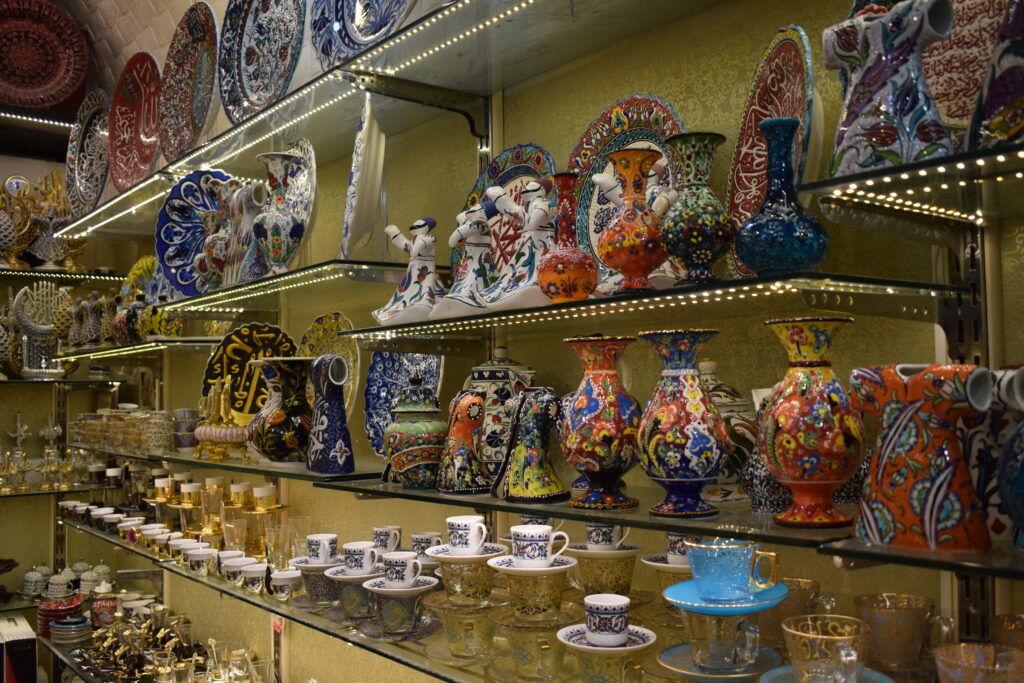
The Grand Bazaar is located in the Fatih district of Istanbul in the vicinity of historical landmarks like Taopkapi Palace (the seat of the Ottoman monarchs), Hagia Sophia (church turned mosque, then museum and back to mosque recently), Sulemaniye Mosque and Basilica Cistern (the hoary underground water reservoir). Visitors are required to remember the gates of their entry in order to get back to the vehicles, more so when they are in groups or with families. Streets and squares are numbered and facilitate people to regroup before departure. Unless precaution is observed, there is real risk of getting lost in the labyrinthine maze of streets, each more dazzling than the other.
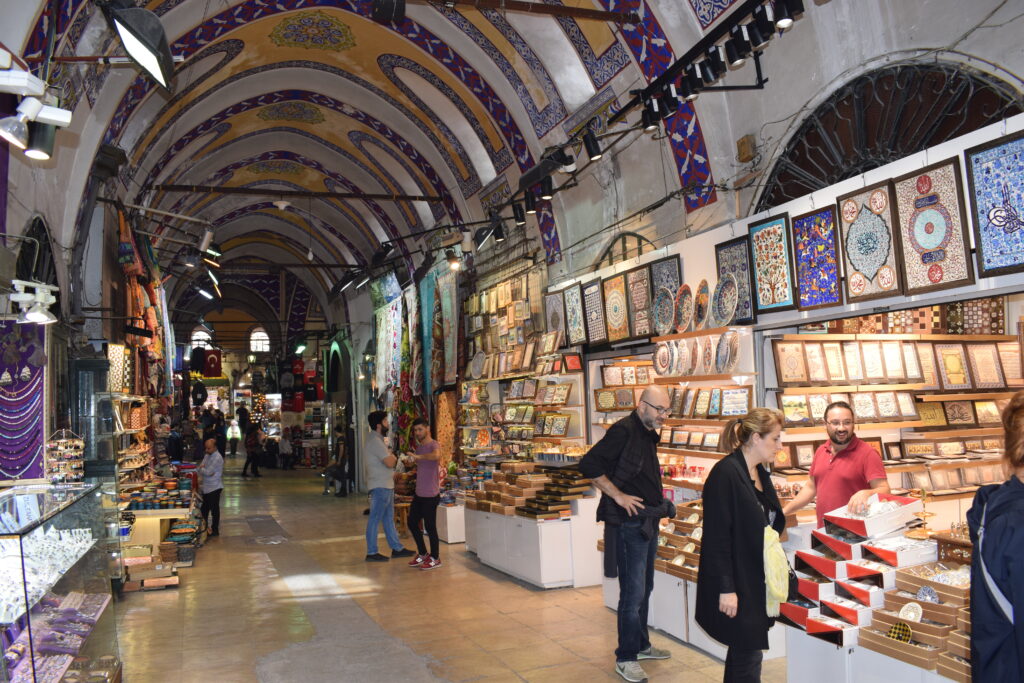
Shops are arranged in clusters of similar products and merchandise. One could find sections that display and sell jewelry; utensils; wooden artifacts; plaques with Arabic calligraphy or paintings; leather items, vanity bags, purses and wallets; decorative tiles; scarves, stockings, gloves and garments; caps, hats, walking sticks; hookah, incense-burners, snuff boxes, pegs and cigar holders; multi-splendoured Turkish pottery; linens & Turkish towels, curios and antiques; clocks, watches, nautical instruments and compasses; diamonds and precious stones; carpets, kilims, doormats and sofa covers; nuts, dry fruits and sweetmeats; spices, herbs and olives; mirrors & frames; crystals and glassware; and silver and ivory articles. The list could be endless and the market’s sensory overload could simply make one let out a wondrous gasp at the first sight.
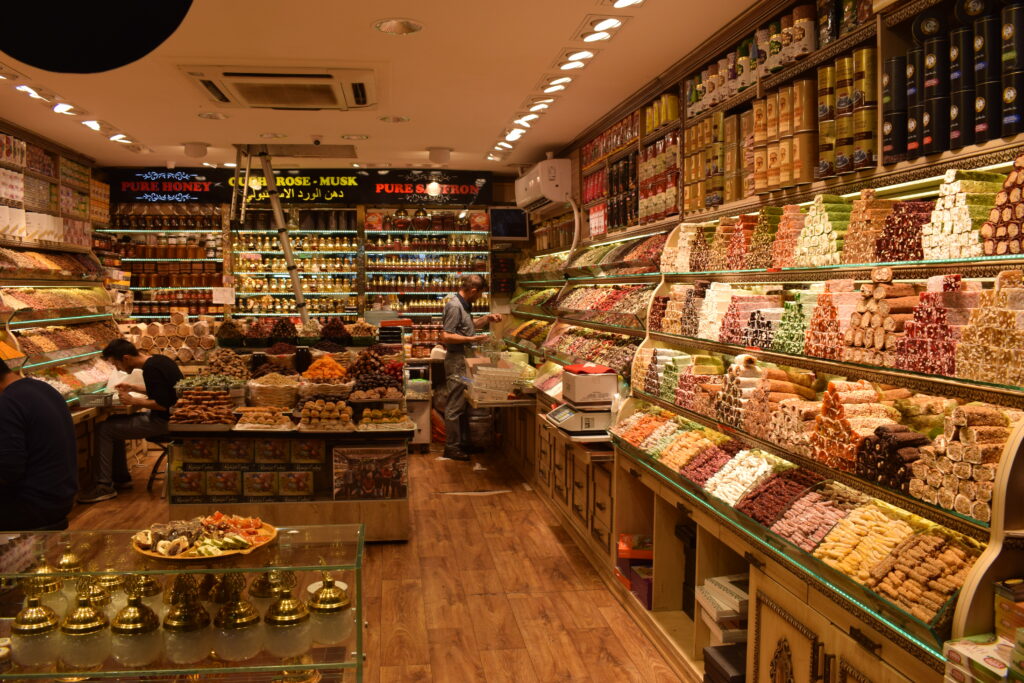
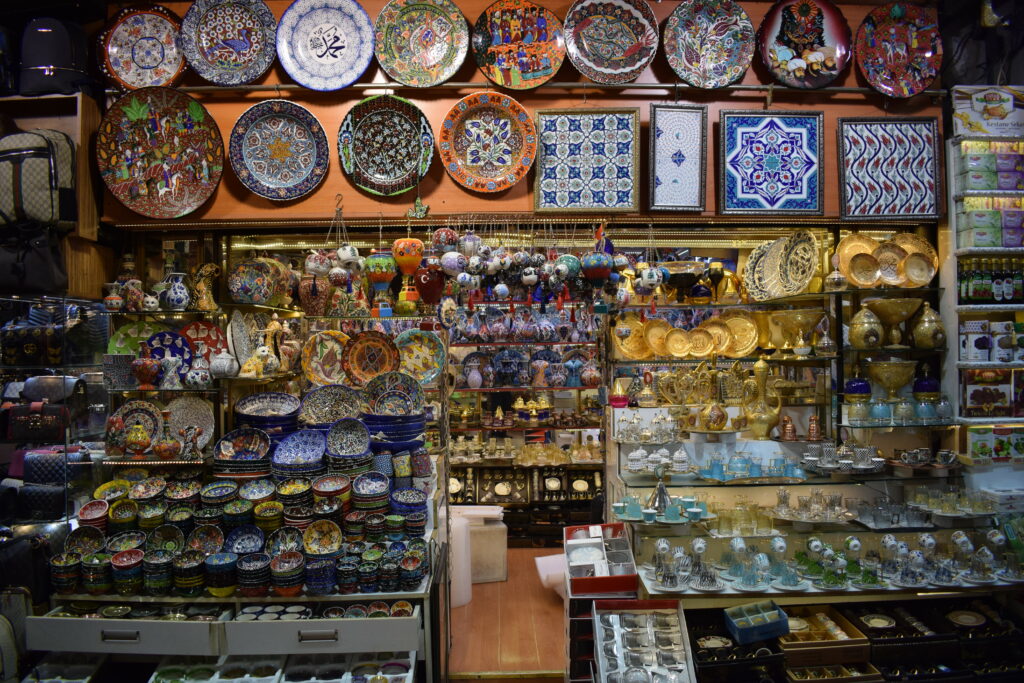
The section displaying the Turkish pottery and decorative tiles is bewitching. Jewelry stores dazzle the eyes. Curio and antique-sellers transport one to the hoary Ottoman period. Glances glide over shiny plaques in the corner reserved for wooden articles. If oriental smells thrill nostrils in the sector dedicated to herbs, the carpet stores dilate the pupils. Sweetmeat shops are objects of sensual delight what with rubbery sweets invariably embedded with nuts are offered free for tasters, no questions asked.
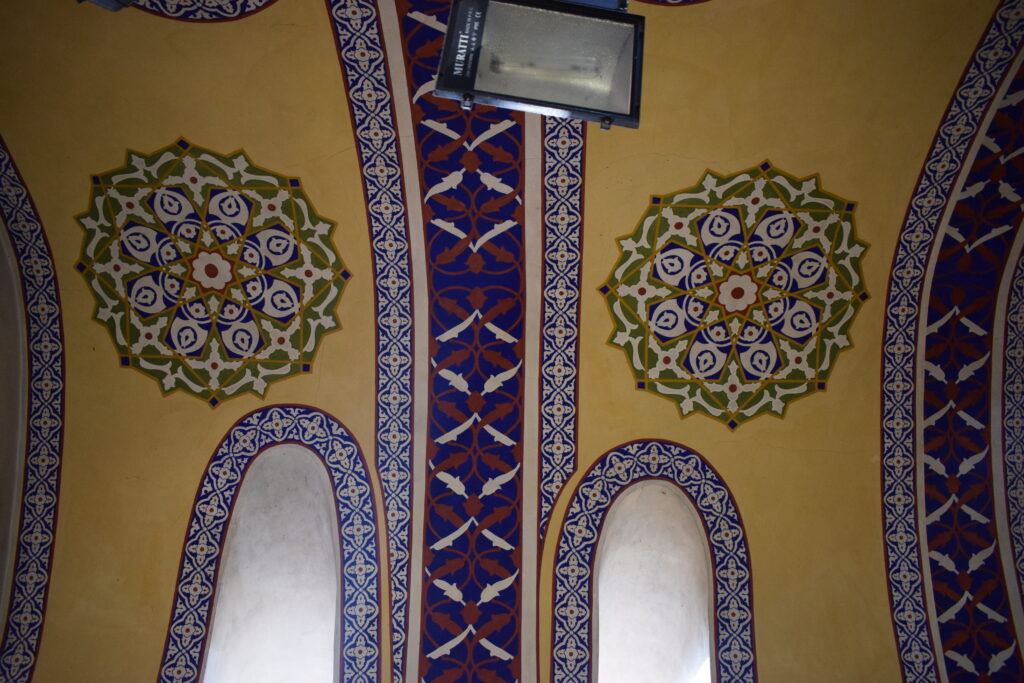
The Grand Bazaar is experienced best at a leisurely pace. Rushing from one shop to another may not help grasping the essence, aroma and spectacle of the bazaar which is trodden by millions of tourists, visitors, sailors and soldiers. A mélange of languages and accents crowds the air. Bargaining is the norm. Accepting a cup of tea does not essentially mean concluding a deal. It is Turkish way of hosting a visitor.

A bevy of artisans, goldsmiths, carvers and outfitters is always at work behind the front showrooms raising tik-tok cacophony at all times of the day. It is thus a combination of centres of production, customizers, tailors and leather smiths. Nourosmaniye Mosque, a grand edifice in itself, marks the main gate while interiors have almost a dozen smaller prayer halls, a police station, health dispensary, a post office dozens of havesi (coffee houses), scores of currency exchangers, branches of most major banks and a tourist information centre.
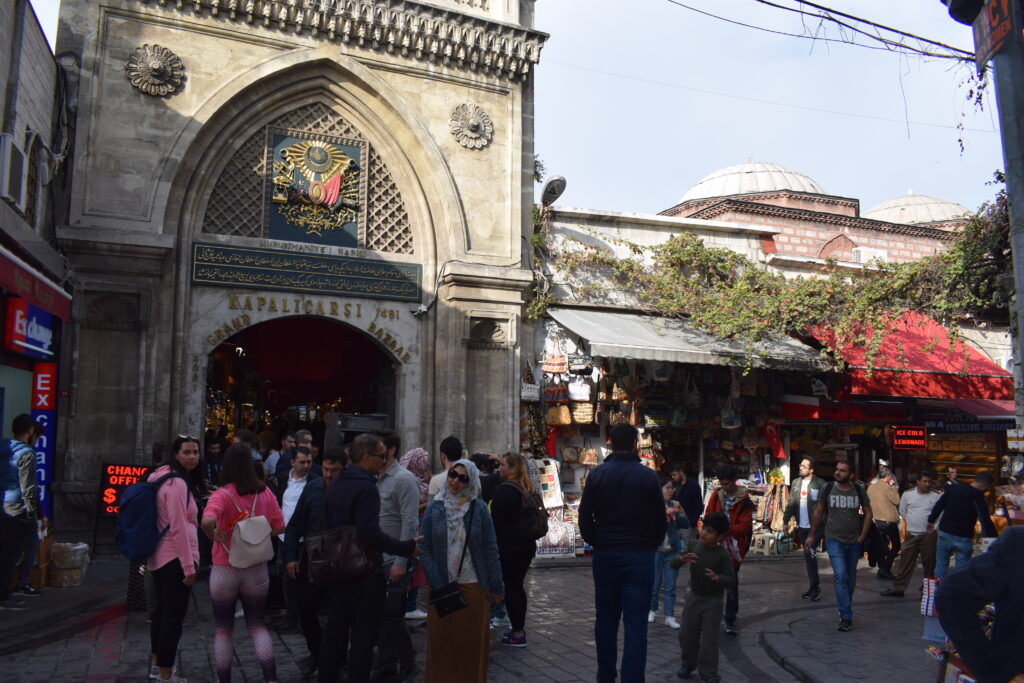
In 2014, Kapali Carsi attracted 90 million visitors and was listed as the most-visited place in the world. Perhaps the oldest shopping mall of the world, the Grand Bazaar employs an army of 26,000 salesmen, artisans and craftspersons. On an average three lakh tourists, visitors and shoppers descend upon this market every day and imbibe its sights, sounds, smells and shades in ample measure.
M.A. Siraj is a senior journalist based in Bengaluru

